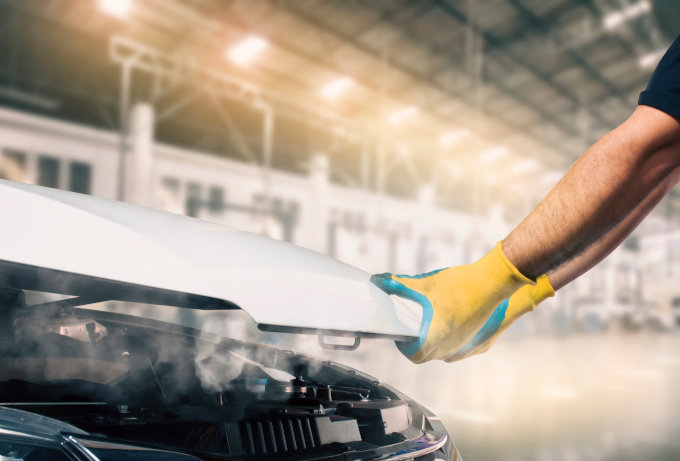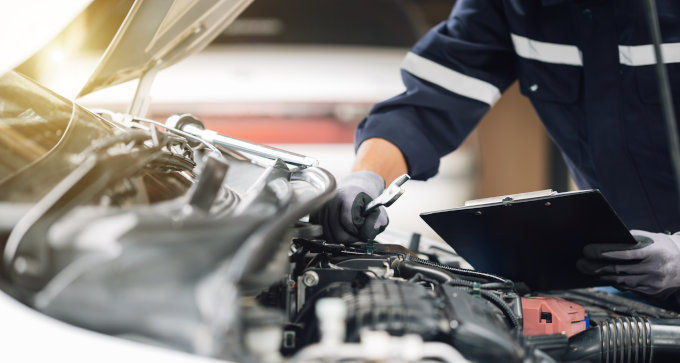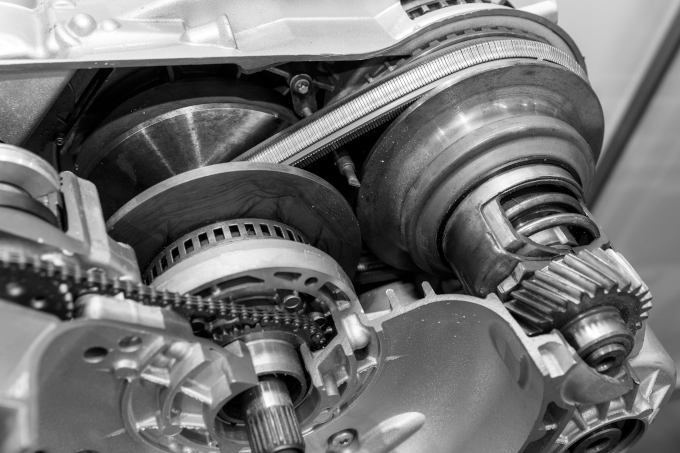This blog article will explore the common indicators that may point to a transmission overheating. By understanding these warning signs and following the appropriate measures, vehicle owners can proactively address the problem and prevent further damage. Whether you have experienced some of these signs or want to enhance your knowledge, this article will provide valuable insights to help you effectively tackle an overheating transmission.
Why Your Transmission Matters
Your transmission is the vital intermediary between the engine and the wheels, responsible for efficiently transferring power and torque. Its ability to enable smooth gear shifting, facilitate acceleration and deceleration, and distribute power appropriately ensures optimal performance, fuel efficiency, and a pleasant driving experience.
Signs of an Overheating Transmission
1. Burning Odor
One of the significant signs of an overheating transmission is the presence of a strong burning odor, often described as a "burnt" smell. If you notice this distinct odor inside the vehicle or near the transmission area, it likely indicates an overheating transmission. The burning odor arises from various factors associated with excessive heat within the transmission.
When a transmission overheats, the fluid inside it can break down, losing its effectiveness as a lubricant and coolant. This leads to increased friction and heat generation, resulting in the characteristic burning smell. Additionally, the intense heat can cause the transmission fluid to oxidize and form deposits on the internal parts of the transmission. These deposits can burn and emit the burnt odor. Overheating can also cause the transmission fluid itself to reach temperatures where it starts to burn, further contributing to the smell.
The burning odor may become more noticeable during or after extended periods of driving. If you detect this smell, it is crucial to address the issue promptly to prevent further damage to the transmission. Driving with an overheating transmission can worsen the problem and potentially lead to more severe issues.
If you encounter a burning odor, it is advisable to stop driving the vehicle, allow it to cool down, and have the transmission inspected by a qualified technician. They can diagnose the cause of the overheating and perform the necessary repairs or maintenance. This may involve checking the transmission fluid level, replacing damaged components, or addressing any issues with the cooling system. By promptly addressing the overheating, you can preserve the health and functionality of your vehicle's transmission, preventing more extensive damage that could result in costly repairs or transmission failure.
2. Fluid Leaks:
Fluid leaks are common signs of overheating and should be taken seriously. When a transmission overheats, it puts excessive stress on the seals and gaskets. The high temperatures can cause these seals and gaskets to deteriorate, warp, or develop leaks. You may observe fluid pooling underneath your vehicle or dripping from the transmission area.
The fluid that leaks from an overheating transmission is typically red or brownish in color but may vary depending on the make and model of your vehicle. It also has a distinct odor. It is crucial to identify the source of the leak and address it promptly. Low fluid levels due to leaks can further exacerbate the overheating problem and lead to more severe damage.
Leaking transmission fluid not only contributes to the overheating issue but also poses a risk to the overall functionality of the transmission. Transmission fluid plays a vital role in lubricating, cooling, and providing hydraulic pressure within the transmission system. Insufficient fluid levels or leaks can compromise these functions, leading to increased friction, inadequate lubrication, and poor transmission performance.
If you notice fluid pooling or dripping from the transmission area, have your vehicle inspected by a qualified technician. They can identify the source of the leak and determine the appropriate repairs or maintenance needed. This may involve replacing damaged seals or gaskets, fixing loose connections, or addressing other transmission-related issues contributing to the fluid leak. Resolving the fluid leaks will help ensure that your transmission operates optimally, reducing the risk of overheating and preventing potential damage to the transmission system.
3. Slipping Gears
When a transmission overheats, it can result in the gears slipping or not engaging correctly, which can noticeably impact your vehicle's performance. Slipping gears occur when the transmission fails to maintain a firm and consistent connection between the engine and the wheels. This can lead to various issues affecting the overall driving experience.
One common symptom of an overheating transmission is a delay in acceleration or a lack of power accelerating. You may notice that when you step on the gas to increase your speed, the vehicle takes longer than usual to respond or struggles to reach the desired speed. This delayed or weakened acceleration is often a result of the transmission slipping, where the intended power transfer from the engine to the wheels is compromised.
In addition to the delayed acceleration, you may experience a lack of power during gear changes. When the transmission slips, it fails to engage the gears firmly, causing a loss of torque and a decrease in overall power delivery. This can manifest as a hesitation or jerking motion during gear shifts, where the vehicle feels momentarily disconnected or struggles to smoothly transition from one gear to another.
4. Warning Lights:
- Transmission Warning Light: A transmission temperature warning light is a vital feature found in many vehicles to monitor the temperature of the transmission fluid. When the transmission temperature exceeds a safe operating threshold, the warning light will illuminate on the dashboard, serving as an important alert to the driver.
- Check Engine Light: The Check Engine Light (CEL) may illuminate if you have an overheating transmission. While the Check Engine Light primarily monitors the engine's performance and emissions, it is also connected to various sensors and systems in the vehicle, including the transmission. An overheating transmission can trigger certain fault codes or abnormalities detected by the engine control unit (ECU), causing the Check Engine Light to turn on.
- Engine Temperature Warning Light: While the engine and transmission are separate components, they are interconnected, and an overheating transmission can potentially lead to engine overheating. The transmission relies on the engine's cooling system to regulate its temperature, and if the transmission overheats, it can strain the engine's cooling system. The excessive heat from the transmission can cause the engine coolant to heat up as well, potentially overwhelming the cooling system and resulting in engine overheating. Therefore, promptly addressing any signs of an overheating transmission is crucial to prevent increased heat transfer to the engine. Having both the transmission and engine inspected by a qualified technician is advisable to diagnose and resolve any underlying issues, ensuring the proper functioning of both systems and preventing potential damage.
5. Unusual Noises or Vibrations:
Overheating can have detrimental effects on the internal components of the transmission. As the transmission reaches elevated temperatures, various parts, such as bearings, gears, and clutches, can expand beyond their optimal operating tolerances. This expansion can increase friction, accelerated wear, and potential damage to these vital components.
One of the signs that your transmission is overheating is the presence of unusual noises. As the components within the transmission experience excessive heat and wear, you may hear distinct noises like grinding, whining, or other abnormal sounds emanating from the transmission area. These noises can indicate damaged bearings, worn gear teeth, or insufficient lubrication due to degraded transmission fluid. The noises may vary in intensity and be more noticeable during certain driving conditions, such as when accelerating, decelerating, or shifting gears.
In addition to unusual noises, an overheating transmission can manifest in vibrations felt in the transmission area or throughout the vehicle. These vibrations can be attributed to the compromised functionality of the transmission components. The increased friction, wear, or misalignment caused by overheating can disrupt the smooth operation of the transmission, resulting in vibrations that may be felt in the gear shifter, the floor, or even the entire vehicle.
What Can Cause an Overheated Transmission?
When your car transmission overheats, several undesirable effects can occur, potentially leading to significant damage or transmission failure if not addressed promptly. Here are some of the seven most common causes of an overheated transmission:
- Insufficient Transmission Fluid: Low or inadequate transmission fluid levels can lead to overheating. Transmission fluid plays a vital role in lubricating and cooling the transmission components. If the fluid level is too low, there may not be enough fluid to adequately dissipate heat, resulting in increased friction and overheating.
- Transmission Fluid Leaks: Fluid leaks are a significant cause of transmission overheating. Leaks can occur due to damaged seals, gaskets, or transmission cooler lines. When the fluid level drops due to leaks, it reduces the cooling and lubrication capacity, leading to elevated temperatures within the transmission.
- Overworking the Transmission: Excessive stress on the transmission can cause it to overheat. Activities such as towing heavy loads, driving in hilly terrain, or carrying excessive cargo can increase the workload on the transmission, leading to higher heat generation.
- Malfunctioning Cooling System: The transmission relies on the engine's cooling system to regulate its temperature. A malfunctioning radiator, cooling fan, or thermostat can disrupt the proper cooling of the transmission fluid, resulting in overheating.
- Clogged Transmission Cooler: The transmission cooler, responsible for cooling the transmission fluid, can become clogged with debris, dirt, or contaminants over time. A restricted or blocked transmission cooler can impede the heat dissipation process, causing the transmission to overheat.
- Faulty Transmission Control Module: The transmission control module (TCM) regulates the operation of the transmission. If the TCM malfunctions or sends incorrect signals, it can lead to improper shifting, excessive slipping, and increased heat generation, ultimately resulting in transmission overheating.
- Overdue Transmission Service: Neglecting regular maintenance, such as fluid changes and filter replacements, can contribute to an overheating transmission. Old or degraded transmission fluid loses its ability to effectively lubricate and cool the transmission components, increasing the risk of overheating.
Save Money and Keep Safe with a Healthy Transmission!
Recognizing the signs of an overheating transmission and understanding the importance of taking immediate action can save you from costly repairs and potential vehicle breakdowns. Your vehicle's transmission is a vital component that requires proper care and maintenance to ensure optimal performance and longevity. Regularly checking fluid levels, promptly addressing leaks, maintaining a functional cooling system, and seeking professional help are essential steps in preserving the health of your transmission. By staying attentive to the warning signs and following the proper steps outlined in this article, you can protect your transmission from overheating, enjoy a smoother driving experience, and extend the lifespan of your vehicle. Remember, when it comes to transmission issues, prevention and early intervention are key to keeping your car on the road and avoiding unnecessary inconvenience and expenses.
Keep Your Transmission’s Cool: Trust AAMCO!
If you're experiencing any signs of an overheating transmission or require professional transmission services in Knoxville, TN, don't wait until it's too late. Contact your AAMCO Center in Knoxville, TN, today for expert diagnosis, maintenance, and repairs. Our skilled technicians specialize in transmission systems and have the knowledge and experience to address any transmission-related issues promptly. Trust us to provide reliable and efficient service to keep your vehicle running smoothly. Don't let an overheating transmission put you on the sidelines—let AAMCO get you back on the road quickly and safely!











